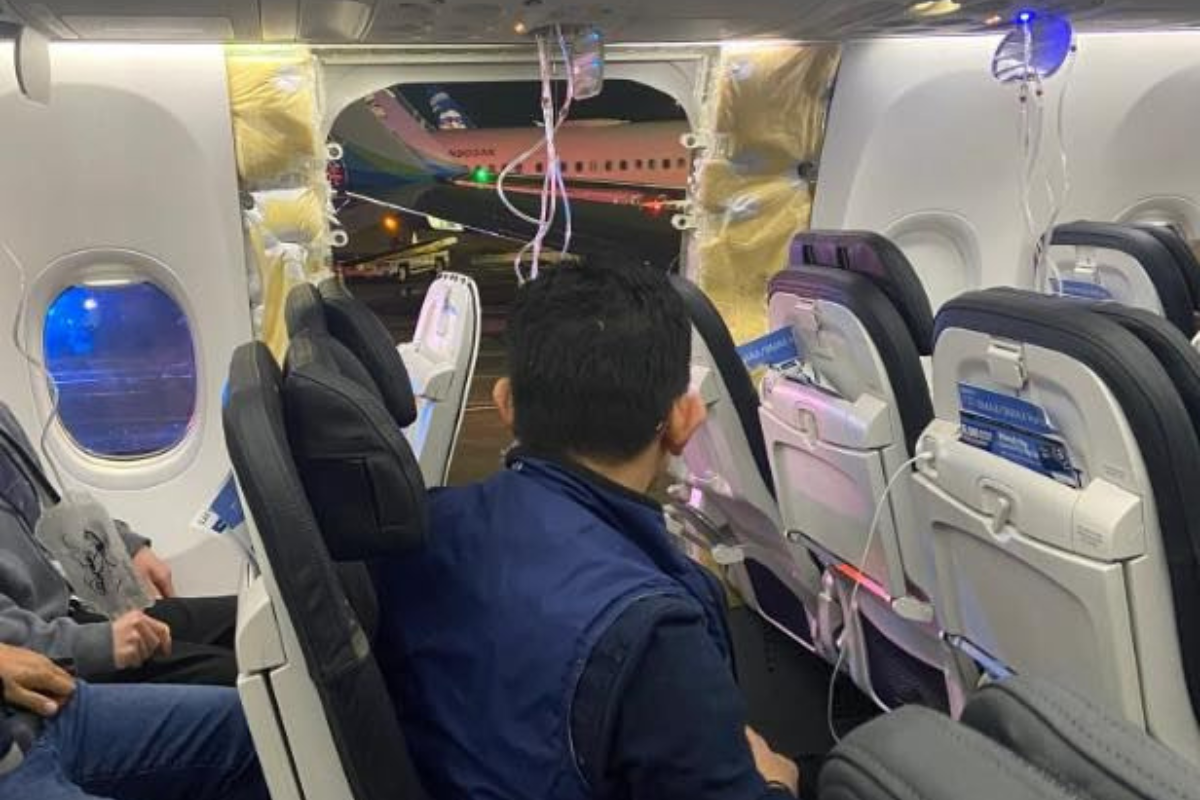
Seven passengers who were onboard the Alaska Airlines-operated Boeing 737 MAX 9 that suffered an exit plug blowout on January 5 have filed the first class action lawsuit against the aircraft manufacturer alleging a manufacturing defect with the airplane under Washington state’s Product Liability Act.
One of the passengers who is named in the lawsuit suffered a concussion as a result of the ‘explosive’ blowout, and she suffered so much pressure in her ears from the rapid decompression that she thought her head was going to explode.
Iris Ruiz was left with a bleeding ear and has “cried over worrying that if she were to die, her adolescent daughter would have no one to care for her”. Iris is one of several passengers who were onboard Alaska Flight 1282 who claimed their oxygen masks weren’t working properly and, as a result, struggled to breathe.
Other plaintiffs named in the suit include Renee Fisher, who started passing out as the pilots diverted the damaged aircraft back to Portland last Friday. One of Renee’s relatives, Gwint Fisher, says the stress of what occurred aboard Flight 1282 resulted in a seizure as he deplaned the aircraft.
The lawsuit has been brought solely against Boeing as the manufacturer of the airplane and not Alaska Airlines as the operator because attorneys bringing the suit believe the accident was the result of a manufacturing issue.
The complaint cites Boeing chief executive Dave Calhoun who has gone on record to call the accident “our (Boeing’s) mistake”.
By implication, the lawsuit alleges, this means the “plug was not properly secured to the fuselage either during manufacture or otherwise while the aircraft was being built”.
The lawsuit also alleges: “The event physically injured some passengers and emotionally traumatized most if not all aboard. The violence of the event bruised the bodies of some”.
“Passengers were shocked, terrorized and confused, thrust into a waking nightmare, hoping they would live long enough to walk the earth again”.
Attorneys representing the passengers aboard Flight 1282 now hope to establish whether, exactly, the exit plug wasn’t securely installed in the damaged plane, which was only delivered to Alaska Airlines in November 2023.
On Thursday, the Federal Aviation Administration (FAA) confirmed that it had now opened an official investigation with Boeing firmly in its crosshairs over alleged manufacturing or installation issues with the exit plug, which has grounded around 171 MAX-9 worldwide.
The FAA has not indicated when the aircraft variant will be cleared to return to the skies but has vowed never to let a similar event take place in the future.
Related
Mateusz Maszczynski honed his skills as an international flight attendant at the most prominent airline in the Middle East and has been flying ever since... most recently for a well known European airline. Matt is passionate about the aviation industry and has become an expert in passenger experience and human-centric stories. Always keeping an ear close to the ground, Matt's industry insights, analysis and news coverage is frequently relied upon by some of the biggest names in journalism.








From a legal perspective, I have a hard time seeing much coming of this particular case. There has to be actual damages in order for there to be an award, and those seem to be lacking here. A concussion and a ruptured ear drum isn’t going to amount to much. And to get damages for “emotional distress”/pain and suffering, those damages still have to be predicated upon actual substantial injury. You can’t just recover for emotional distress in a vacuum.
So while Boeing deserves ample recourse for its failures, I don’t see this particular case going too far.
Agreed. The ruptured ear could be mere pittance or they could argue long term damage which could be slightly above pittance. It’s interesting they didn’t go after Alaska because then you have a strict liability claim against them under the Montréal convention although the recovery would be limited without further evidence sustaining monetary damage above the max. Though I’m assuming Boeing will make cross claims against Alaska because their A&P technicians had certified the plane flight worthy day-after-day since delivery of the plane and inspection of these doors would be within their remit of inspection.